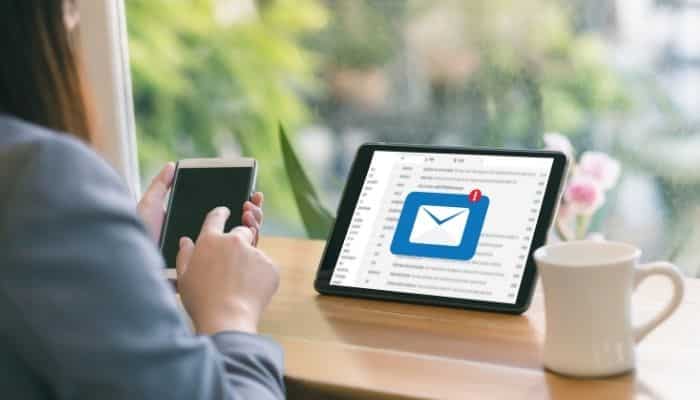
Follow-Up Emails: How to Improve Your Reply and Conversion Rates
Have you ever sent an email and not received a reply? It can be frustrating, but there are some things that you can do to make sure your email gets read. In this blog post, Ross Jenkins of DigitalME discusses how follow-up emails can help you increase your reply rates and conversions.
The email marketing landscape is changing and it’s important to stay on top of trends in the industry. Efficiency has become crucial, with open rates plummeting below 20% for many marketers – a number that continues to decline each year. Follow-up emails, however, can boost these metrics.
Related: 9 ways to boost email open rates
What’s the purpose of your follow-up emails?
Dunce content is a waste of time and effort, so make sure your follow-up emails have a meaningful purpose. It’s hard to get an email read, so the content needs to be concise and relevant to generate interest.
The average email has an opening rate of 25%, meaning that only one in every four recipients will read your email.
There is no one-size fits all solution for email marketing campaigns because every business has unique needs. The best way to improve your reply rates is by implementing tactics specific for your industry or audience demographic. One tactic might work well for one company but not another!
Email marketers have also started using text messages as part of their strategy. This can help boost response rates, especially among millennials who tend not respond via traditional emails like older generations do.
Follow-up emails push prospects down the funnel
In email marketing, people need to take action in order for you to complete a conversion (i.e., make the sale). For email campaigns to be successful and effective, your audience has to take some sort of action at each stage of the funnel. And follow-up emails are an important part of this process.
This blog post will also provide you with statistics on why following up is important and how many people actually respond to these emails – both of which prove that email follow-ups are worth the effort.
A follow-up email is the best way to reach out when you want to:
- build a relationship with subscribers,
- keep them informed about your company, and
- eventually convert email subscribers into customers.
This makes it even more important to make sure you have compelling content in each email that gets opened. Otherwise, those messages are going to waste.
Remember: It’s better to send fewer quality messages than tons of mediocre ones with low engagement levels.
Email follow-ups are a valuable way to increase your email’s response rates and conversions. By implementing these five email follow-up tactics, we hope you’ll have a better understanding of how to improve your metrics.

Grab their attention with a good subject line
First, use compelling subject lines for your follow-up emails. They should be intriguing enough to get the reader’s attention. This will help your email stand out and get read.
People are mostly skimming their emails and they’ll only read about half of what you send out there. So, make sure to grab your prospect’s attention with a headline that will compel them enough to click.
Personalize your content
There are many email marketing tactics for email follow-ups. One is that you provide personalized content to your recipients and answer any questions they may have.
When we get a personalized message, it makes us feel valued and important because it shows how much time the company took for just one person. It doesn’t seem like they’re sending an email blast to everyone at once. By being timely with your follow-up emails, you can also increase conversion rates.
So, create personalized messages based on the recipient’s past interactions or interests. For example, if someone has purchased from you before, use their name at the beginning of every email. It sounds silly but it really works like magic.
However, this is just the first step. What other aspects can you personalize? Gather all the data you have, segment your email list and send each group a targeted message.
Follow-up emails should include information that is valuable for readers. It could be links to articles they may find interesting or relevant information about your company’s offerings.
Avoid sending emails too often
Twice per week for most industries should be more than sufficient. Once you’ve sent five consecutive emails without any replies, it’s time to change focus and send out new content instead of following up on something old.
Practice what you preach: set limits on when you’ll respond so others feel like they can do the same.
Also, make sure to find out if your email was opened, by using a tool like Google Analytics or another email tracking software. If it has been opened, send another email and try to answer the recipient’s question as best as possible to increase engagement rates.
Finally, always include any relevant links within this email. This prevents people from going elsewhere on the internet to look for more information.
Keep email templates simple
To make readying easy, keep your email templates simple while still being clear with what you want from your prospects.
The best tactic for improving your reply rates is to be explicit with what it is that you want from the reader.
Don’t just say “please let me know what you think” or “let’s talk.” Be more specific about what it is that you want from them. For example, ask them if they’d like to receive future posts on a certain topic or sign up for your email list.
The key word here is “ask”.
Include an incentive to reply
Lastly, follow-up emails should come with an incentive to reply, such as a special offer for those who open the email.
So, offer something in return for feedback. It could be an exclusive coupon code that can only be used by those who share their thoughts on your product.
Also, in your follow-up emails, consider adding links back to your original email marketing piece. Linking back to the email marketing piece will enable viewers to find out more information about your email – without having to email you or visit a website.
Use tools such as ZeroBounce which are designed with email marketers in mind. This will increase your email delivery rates and help you land in the inbox.
To keep your list healthy and maintain high open rates, send more than one email per campaign. Instead, send a series of emails, also known as a “drip campaign”.
This will allow you to test different types of content while still being able to reach all of your subscribers when they’re most interested. You need to track opens so you know what content works best for your target audience.

Example of a follow-up email
So, what does a follow-up email look like? Here’s an example you could use for inspiration.
Dear Sally,
I hope you had a great week!
I wanted to follow-up with our email conversation from last Thursday about my blog post. If you have any feedback for me (or questions), please let me know and we can chat more in detail on the phone or via email – whichever is most convenient for your schedule.
Best,
Ross Jenkins
This email includes both a personal message and an explicit call-to action. It provides the person with information on how they can contact me to get more information about the blog post.
Furthermore, the email includes details on our previous discussion so that the person better understands what I’m referring to.
Here are some examples of email follow-ups you could use to increase your email response rates:
- A reminder about an event coming up at the end of the month
- An offer for a limited time promotion or special deal
- New content on your blog, social media channels, or email newsletter
One last thing: what’s in it for your readers?
To be more successful with your follow-up emails, find what topics resonate most with your audience. Always make sure that there’s something in it for readers – whether it’s freebies, discounts, new information about their favorite brands, or something else.
In conclusion, there are many tactics you can use to increase reply rates. Email follow-ups are a valuable way to increase your responses and conversions. Now that you know the tactics, it’s time to put them into practice!
I hope these tips have been helpful to you and your business. If you’re looking for more email marketing tips, visit the DigitalME blog.






